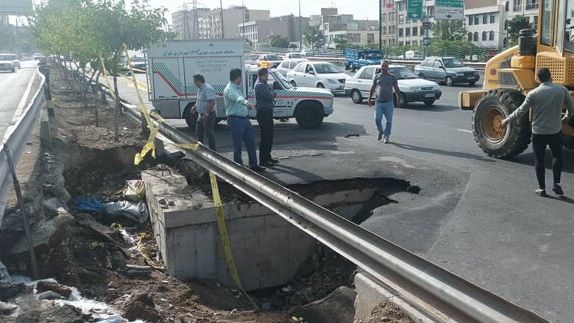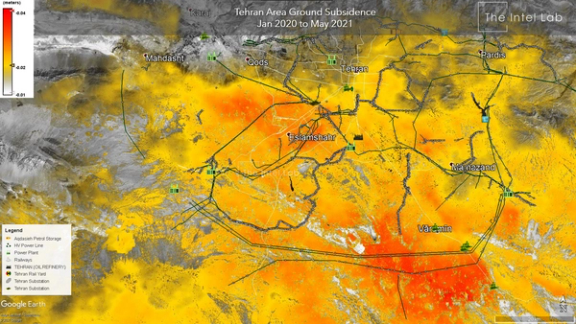Ground Subsidence In Heart Of Tehran Sparks Serious Concerns

Ground collapse in the heart of the capital Tehran Thursday once again highlighted the many dangers that Iran’s industrial and financial center may be facing.

Ground collapse in the heart of the capital Tehran Thursday once again highlighted the many dangers that Iran’s industrial and financial center may be facing.
According to local media the ground collapsed at 7:40 in Sepah Ave in central Tehran. Chief of Tehran police information center, Ali-Asghar Sharifi, told the media that police and other authorities were working at the scene to secure the area and redirect traffic. The incident had no casualties.
There have long been concerns about earthquakes in Tehran as it sits on tectonic fault lines. Ground subsidence, however, resulting from drought and excessive extraction of water which is likely to become more serious in the future adds a new concern and danger to the densest population center in Iran.
Ground subsidence in urban areas can result in power outages, bursting of gas pipes, deformation of rails, emergence of sinkholes, tilting of buildings, and appearance of cracks and ditches in roads and even loss of human life.
Mohammad Aghamiri, chairman of Tehran City Council’s development committee on Thursday described ground subsidence as a time bomb ticking under the city and criticized the authorities for only watching idly without taking any measures to prevent disaster from happening.
This is not the first instance of ground subsidence in Tehran where smaller fractures and cracks are quickly becoming common in some areas of the city, particularly south and southwest.

According to the latest official data by Iran’s Geological Organization, the rate of subsidence in the plains around Tehran was between 17 and 24 centimeters per year. The deputy chairman of the environment committee of Tehran City Council, Mehdi Babaei, said recently that ground has subsided by as much as 20 centimeters (8 inches) a year near Shahriyar in southern Tehran.
Ali Saberi, a geologist told local media in 2021 that one million hectares of land in the country is affected by subsidence and the main cause is unlimited extraction of ground water.
Intel Lab intelligence and imagery consulting firm in July 2021 said a brief study it had conducted based on a dataset of 14 pairs of satellite images showing various areas of Greater Tehran indicated a maximum average subsidence rate of 4 centimeters/year.
Huge cracks and hollows that resemble meteor craters have appeared in other parts of the country. In urban areas subsidence has caused cracks in walls and in roads.
One of the most affected areas is the historical city of Esfahan in central Iran where the damage to monuments and the international airport have been cause of much concern.There are photos on social media of huge cracks in the ground around the airport, and of hollows in and around Esfahan’s historical buildings.
Iran has been experiencing consecutive droughts for more than a decade in addition to what many lawmakers and journalists have called years of water mismanagement. Illegal deep wells drilled all over the country for irrigation of agricultural land have depleted underground water reserves in many areas.
Alireza Shahidi, head of Iran’s Geological Organization said in March that land subsidence is a “silent earthquake” that can lead to political and security crises.